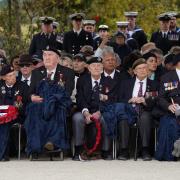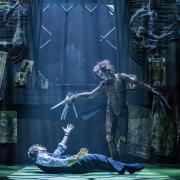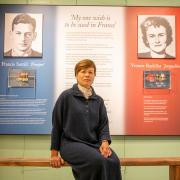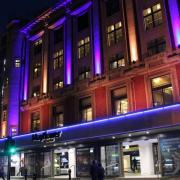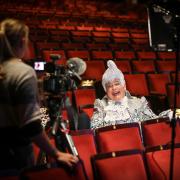“Racing to War” is on at the National Museum of the Royal Navy at the Portsmouth dockyards from April 2014 to January 2015.
A gun, a boat and a sledge don’t sound much like artefacts that shaped history. But an exhibition in Portsmouth, “Racing to War”, has chosen objects that, “tell an astonishing history over the century of greatest change,” according to curator Matthew Sheldon. Stephanie Strong raced down to see three stand-out exhibits: the gun that fired the first shot of World War I; a genuine Cockleshell Heroes canoe; and the sledge that rescued Scott off the Antarctic.
The Cockleshell Heroes canoe
A classic David vs. Goliath tale is the story of the ten Portsmouth born-and-bred Cockleshell heroes, who, armed only with canoes and mines, shortened the war by six months according to Winston Churchill.
Their mission was to plant limpet mines on the German ships docked at Bordeaux in the dead of night. The perilous work meant risking everything, and being protected by nothing. This was no training exercise and the dangers of being shot, blown up or captured were all too real.
The ten young Marines managed to destroy four ships and caused damage to multiple others, changing the course of the war forever.
Of the ten, only two survived and escaped into Spain. Two died of hypothermia and the other six were captured by the Germans.
Their courage put Portsmouth on the map of World War II heroes forever, and their canoe on the wall of the Royal Naval Museum in Portsmouth.
The sledge that rescued Captain Scott
A thousand miles of icy waste is a long way to travel in a sledge to find a dead man. But the body in question was no ordinary man. It was the dead body of world-famous Antarctic explorer Captain Scott.
Captain Robert Scott had not been successful in his expedition to be the first to reach the South Pole in the Antarctic. Finding the Norwegian explorer Roald Amundsen had got there first, crushed by defeat, Scott’s team could fight the cold no longer.
But Petty Officer Thomas Williamson was not to know this when he set out to look for him. Perhaps it was the bond of brotherhood that helped him locate a body in an icy wilderness the size of Australia; or perhaps it was just pure instinct.
The Antarctic does not hold back. 1018 miles is a long way to travel with only wooden slats to move you in temperatures of minus 50. When the ponies did not survive the cold, they replaced them with dogs. When the dogs were exhausted, they used sails.
Williamson was the first person to enter the tent on 12th November. Lifting the flap, he found the frozen bodies of Scott’s team in exactly the same state in which they had died 10 months before.
The bodies were within miles of the South Pole, which they arrived at on the 17th January 1912.
Scott may have failed in being the first to the South Pole, but Williamson had been successful in finding the lost heroes. Only the sledge now survives, taking pride of place on the wall of the Racing to War exhibition.
The Gun That Launched A Thousand Ships
Standing back and peering up the metal gunwale of the giant gun at the National Museum of the Royal Navy, it is almost possible to see the smoke rising from the end of the barrel.
It is the middle of a grey weekday afternoon and Patricia Fish, the museum guide, has led me round the end of the two-metre long ship-gun that stood at the front of the HMS Carolyn destroyer in World War I to show me where two men stood to steer it.
So what made those men trigger four years of bloodshed? I ask. Did they slip? She smiles then frowns, “Unfortunately not,” she said.
On 5th August 1914, in the early hours of an August morning, the HMS Carolyn military destroyer was cruising the waters of the Baltic Sea. War had been declared at 11pm the night before but as yet was still only a theory. All was still calm off the European coast, and there was no sign of any conflict.
As The HMS Carolyn cruised gently past a passenger ship on the outskirts of Holland waters the British Captain’s stomach lurched. In making the order, he did not flinch, even though it signalled no return. Four successful hits pounded against the passenger ship. As the British navy desperately shouted from the loudspeaker to surrender, the ship was scuttled by its captain and sank before the eyes of the shaking officers.
What had looked at first like an innocent cruise ship, taking tourists from Holland to Germany, had been anything but. The HMS Carolyn had accidentally stumbled across a German mine-layer, caught in the act of planting bombs in Amsterdam waters.
Four more years of bloody combat continued for the officers on board, in a war that was to change the shape of the world as they knew it.
For those who care to tread lightly around how a moment’s peace can become a dance with death, the gun is a potent reminder of how every war begins with just one shot.
--------------------------------------------------
Read on




